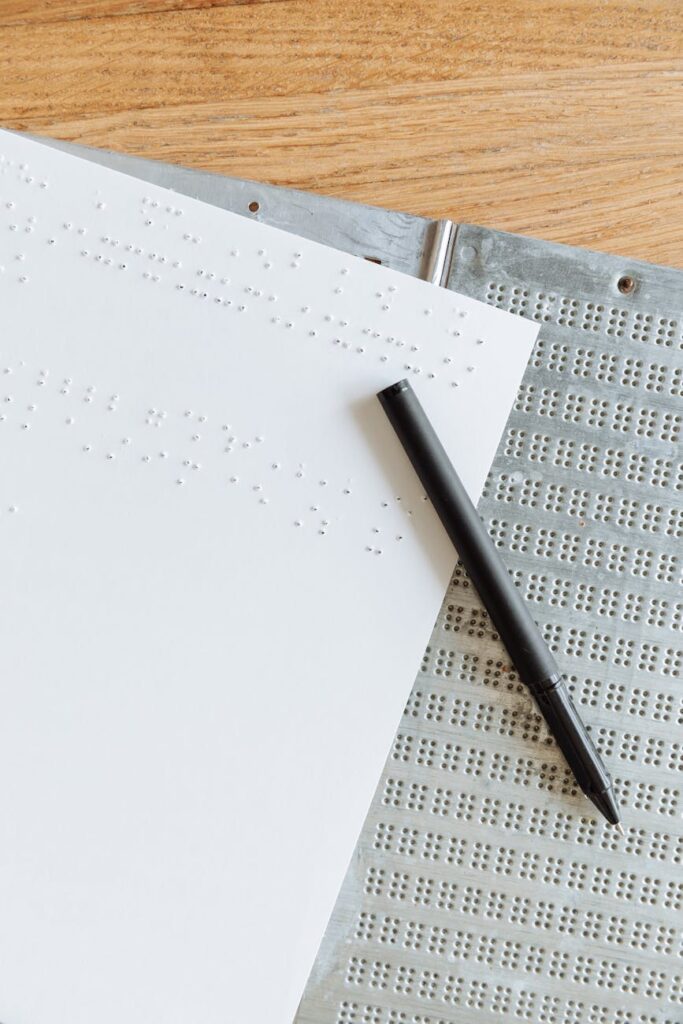Key Takeaways:
- Understanding the significance of Braille signage in fostering accessibility.
- Insights into how Braille signs enhance user experience in public spaces.
- Practical tips for implementing effective Braille signage.
Table of Contents:
- Introduction to Braille Signage
- Importance of Accessibility in Public Spaces
- The Design and Functionality of Braille Signs
- How Braille Signage Benefits Different User Groups
- Best Practices for Implementing Braille Signage
- Innovations in Braille Signage Technology
- Case Studies: Successful Braille Signage Implementations
- Future of Braille Signage in Urban Planning
Introduction to Braille Signage
Braille signage is a method that enables individuals who are blind or have visual impairments to comprehend information through touch. It is a vital aspect of inclusive environments, guaranteeing that everyone has equal access to information and can traverse spaces safely and autonomously. Braille signs are used in a variety of settings, including public buildings, schools, workplaces, and hospitals
Besides enhancing accessibility, Braille signage is essential in promoting a sense of belonging for the blind or visually impaired. By providing tactile information, Braille signs empower individuals to navigate their surroundings confidently and participate fully in everyday activities; for more information, visit https://www.healthcaresigns.com/sign-type/ada-signs-with-braille.
Importance of Accessibility in Public Spaces
Accessibility in public spaces is crucial, and Braille signage is pivotal. Governments and organizations worldwide acknowledge the significance of such measures. They comply with legal mandates like the ADA regulations in the US and align with the global push for equal access for all. Implementing accessible solutions is about recognizing that everyone deserves the same level of independence and dignity. Establishing an environment that caters to all users reflects a society that values inclusivity, proving to be both progressive and empathetic.
Additionally, studies have shown that inclusive environments benefit not just those with disabilities but the general population. Using straightforward and user-friendly navigational tools such as Braille signs allows individuals to navigate spaces more effectively, lessening confusion and improving the overall experience for users.
The Design and Functionality of Braille Signs
Designing Braille signage involves a deep understanding of tactile communication. Effective signs must feature raised characters and Braille dots that are easily readable by touch. Placement is also key—signs should be positioned where they can be easily reached and read by those who rely on them. Adhering to standardized protocols regarding height and location ensures the signs fulfill their intended purpose without alienating the individuals they aim to assist.
Furthermore, materials used in Braille signage must withstand varying environmental conditions. Durability is critical as these signs frequently find homes in outdoor or high-traffic areas. Moreover, the choice of color and contrast can enhance the visibility of Braille signs, allowing partially sighted individuals to also benefit from them, making these elements an equally vital part of their design and functionality.
How Braille Signage Benefits Different User Groups
Braille signage is not only for the benefit of those who are visually impaired. It enhances the overall user experience in public spaces, creating more organized and navigable environments. For example, large complex areas like airports and hospitals rely on such signs to streamline movement and prevent confusion. Clear and effective communication aids reduce stress and increase efficiency, which can be crucial in bustling or time-sensitive environments.
Furthermore, inclusive signage practices promote a culture of acceptance and respect. By acknowledging the needs of various user groups, spaces become inviting and centered around people, encouraging a diverse range of individuals to participate freely and without fear.
Best Practices for Implementing Braille Signage
To implement Braille signage effectively, it is essential to consider factors such as placement, readability, and maintenance. Signs should be placed at heights accessible to all potential users. The text must be concise and legible, and regular maintenance is needed to ensure the Braille dots remain intact over time. Following these best practices not only ensures compliance with accessibility standards but also maximizes the practical utility of the Braille signs.
Consultation with disability experts and target users can offer valuable insights into optimizing these signs. Feedback collected from real-world applications can guide adjustments and enhancements, resulting in more effective integration of Braille into a space’s navigational scheme.
Innovations in Braille Signage Technology
Technological advancements are rapidly transforming Braille signage. Innovations such as smart Braille displays that offer dynamic information through touch are becoming increasingly popular. These new modalities include digital interfaces that can deliver real-time updates, further enhancing the user experience in public spaces. For instance, bright signs can inform users of schedule changes or unexpected events in malls or public transit systems, offering higher interaction and engagement.
Such technology represents an exciting frontier for accessibility products, where innovative solutions can coexist with traditional methods, collectively contributing to an enriched urban landscape.
Case Studies: Successful Braille Signage Implementations
Several public and private spaces have successfully implemented Braille signage, bridging gaps in accessibility. For instance, major airports like Amsterdam and New York have significantly improved passenger satisfaction by integrating comprehensive tactile maps and directions. The feedback from these implementations is overwhelmingly positive, underscoring the effectiveness of well-planned Braille signage strategies.
These case studies reveal that with the proper execution, Braille signage not only complies with accessibility laws but also creates a more harmonious public environment that benefits all users by simplifying navigation and fostering independence.
Future of Braille Signage in Urban Planning
The future of Braille signage looks promising, with architects and urban planners increasingly factoring accessibility into their designs. The trend toward smart cities implies a closer integration of traditional tactile signage with digital technology to create truly inclusive environments. As we move forward, the role of Braille signage in urban planning will likely expand, ultimately leading to more streamlined and accessible cities across the globe.
This convergence of old and new technologies offers exciting possibilities for future urban landscapes, where accessibility is not an afterthought but a fundamental design principle, ensuring inclusivity and ease of use from the ground up.

